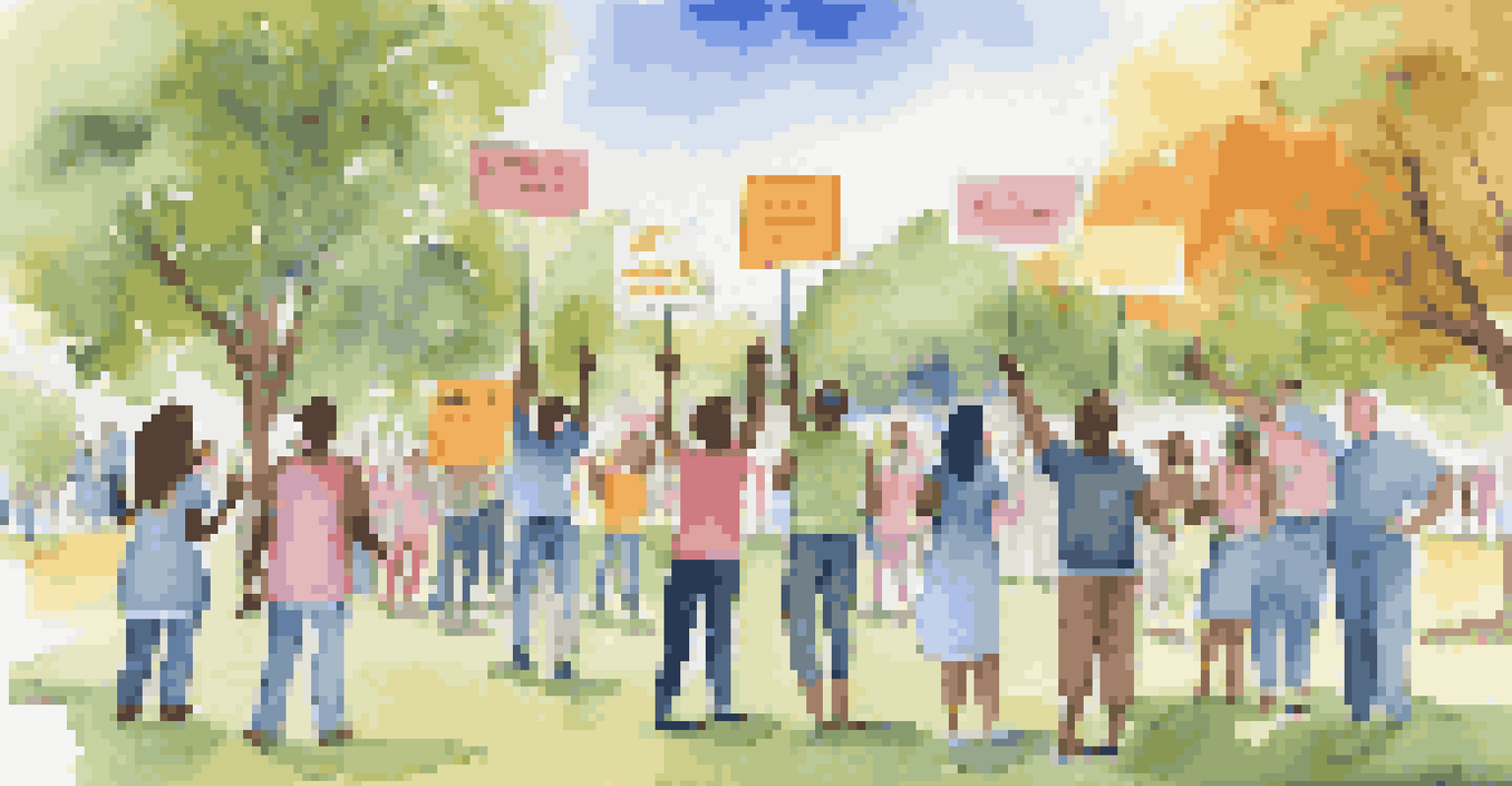Understanding the Mental Health Needs of Underserved Groups

Defining Underserved Groups in Mental Health Context
Underserved groups refer to populations that lack adequate access to mental health services. This can include racial and ethnic minorities, LGBTQ+ individuals, and those living in rural areas. These communities often face systemic barriers that prevent them from receiving the care they need.
Mental health is often missing from public health debates even though it's critical to wellbeing.
Understanding who these groups are is crucial for tailoring mental health services. For instance, a rural community might struggle with transportation issues, while ethnic minorities may encounter cultural stigma around mental health. Recognizing these differences helps to develop more effective outreach strategies.
Additionally, underserved groups may experience higher rates of mental health conditions due to social determinants like poverty and discrimination. By defining these groups, we can better comprehend the unique challenges they face and work towards solutions.
Barriers to Accessing Mental Health Services
Barriers to accessing mental health services can be both visible and invisible. Financial constraints, lack of insurance, and transportation issues are common hurdles. Furthermore, the stigma surrounding mental health can discourage individuals from seeking help, especially in tight-knit communities.

Cultural differences also play a significant role in these barriers. For instance, some cultures may prioritize physical health over mental health, viewing mental illness as a sign of weakness. This can lead to reluctance in discussing mental health issues and seeking professional help.
Understanding Underserved Groups
Identifying underserved groups is essential for tailoring mental health services to meet their unique challenges.
Moreover, there is often a lack of culturally competent providers who can effectively address the specific needs of underserved populations. Without the right support, individuals might feel misunderstood or disrespected, further alienating them from essential services.
The Impact of Stigma on Mental Health
Stigma surrounding mental health can have devastating effects, particularly in underserved communities. Many individuals internalize societal attitudes, which can lead to feelings of shame and isolation. This stigma can prevent people from discussing their mental health struggles or seeking help.
Stigma is the major barrier to mental health care, and it can be addressed through education and awareness.
For example, in some cultures, mental illness is viewed as a taboo topic, making it difficult for individuals to open up about their experiences. This silence only perpetuates the cycle of suffering, as individuals may struggle alone without support.
Combating stigma requires community engagement and education. By sharing stories and promoting understanding, we can shift perceptions and encourage individuals to seek the help they need without fear of judgment.
Culturally Competent Care: A Necessity
Culturally competent care is essential for effectively addressing the mental health needs of underserved groups. This approach involves understanding and respecting the cultural backgrounds of patients. Mental health professionals should be trained to recognize cultural differences and apply them in their practice.
For instance, a therapist working with a Hispanic family might consider the importance of familial ties in their treatment plan. By incorporating cultural values, practitioners can help clients feel seen and understood, fostering a stronger therapeutic alliance.
Barriers to Mental Health Access
Various visible and invisible barriers, including stigma and lack of culturally competent care, hinder access to mental health services.
Moreover, culturally competent care can lead to better treatment outcomes. When individuals feel comfortable and respected, they are more likely to engage in the therapeutic process and follow through with treatment recommendations.
Community-Based Approaches to Mental Health
Community-based approaches can effectively address mental health needs in underserved populations. These strategies often involve local organizations and leaders to create tailored programs. By engaging the community, services can be designed to meet the specific needs of the people they serve.
For example, a community center might host workshops on mental health awareness, providing valuable resources in a familiar setting. This not only raises awareness but also helps to reduce stigma, as individuals see their peers participating.
Involving community members in the planning and implementation of mental health services ensures that programs are relevant and accessible. These grassroots efforts empower individuals and foster a sense of ownership over their mental health care.
The Role of Technology in Mental Health Access
Technology plays a pivotal role in increasing access to mental health services, especially for underserved groups. Telehealth options allow individuals to connect with providers from the comfort of their homes. This is especially beneficial for those with transportation challenges or those living in remote areas.
Furthermore, online resources and apps can provide valuable information and support without the need for face-to-face interaction. For example, mental health apps can offer coping strategies, mindfulness exercises, and screening tools, making support more accessible.
Advocacy for Systemic Change
Advocating for policy changes is crucial to enhance mental health services and address the social determinants affecting underserved populations.
However, it’s important to ensure that these technological solutions are user-friendly and culturally relevant. By addressing the digital divide and providing training on using these tools, we can enhance access to mental health care for all.
Advocacy for Policy Change in Mental Health
Advocacy for policy change is essential to improve mental health services for underserved groups. By raising awareness about the unique challenges these populations face, advocates can push for reforms that enhance access to care. This includes advocating for increased funding for mental health services and promoting culturally competent training for providers.
Moreover, policies that address social determinants of health, such as housing and education, can have a significant impact on mental well-being. By tackling these root causes, we can create a more equitable mental health system that serves everyone.

Community involvement in advocacy efforts is crucial. When individuals share their stories and experiences, they can influence policymakers and drive change, ensuring that the voices of underserved groups are heard and valued.